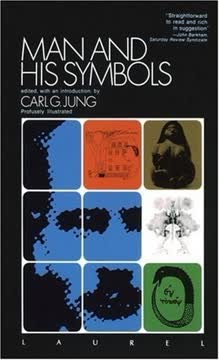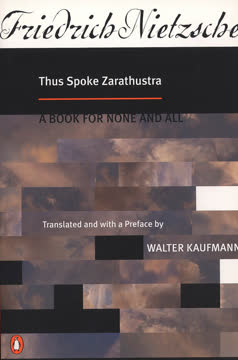重点摘要
1. 爱是一门需要知识和努力的艺术
“爱是一门艺术吗?那么它需要知识和努力。”
爱作为一种技能。 与普遍的看法相反,爱不仅仅是一种偶然的愉快感觉。它是一门需要奉献、学习和实践的艺术。像任何其他艺术形式,如音乐或绘画,掌握爱需要:
- 理论知识:理解爱的原则和概念
- 实践应用:积极参与爱的行为和关系
- 承诺:将爱作为生活中的终极关切
文化误解。 许多人认为找到合适的人去爱是主要挑战,而不是培养爱的能力。这种观点受到以下因素的强化:
- 现代社会的营销导向
- 强调被爱而不是去爱
- 混淆了“坠入”爱河的初体验和“处于”爱中的持久状态
2. 成熟的爱是保持自我完整的结合
“爱是对所爱之物的生命和成长的积极关心。”
平衡统一和个体性。 成熟的爱涉及在与他人结合的同时保持自我感。这种矛盾状态需要:
- 克服分离感而不失去个体性
- 尊重所爱之人的独特性
- 保持自己的完整性和身份
成熟爱的组成部分:
- 关心:对所爱之人的福祉的积极关心
- 责任:愿意回应他人的需求
- 尊重:承认和接受他人的个体性
- 知识:深刻理解他人
3. 爱不仅仅是一种感觉,而是一种积极的力量和实践
“爱一个人不仅仅是一种强烈的感觉——它是一种决定,是一种判断,是一种承诺。”
爱作为一种行动。 真正的爱不仅仅是一种情感,而是一种需要持续努力和实践的积极力量。它包括:
- 做出有意识的决定来培养关系
- 致力于所爱之人的成长和福祉
- 即使情感波动,也要进行爱的行为
爱作为积极力量的特征:
- 给予:分享自己的快乐、兴趣、理解和自我
- 生产性导向:促进自己和他人的成长
- 责任:回应他人表达和未表达的需求
- 知识:努力理解所爱之人的本质
4. 自爱是真诚爱他人的基础
“爱他人和爱自己不是对立的。相反,所有能够爱他人的人都会对自己有一种爱的态度。”
自爱与爱他人的相互依存。 与认为自爱是自私的观点相反,自爱是真诚爱他人的前提。这一概念包括:
- 认识到自己的价值和潜力
- 培养对自己的生产性和成长导向的态度
- 理解自爱与自恋或自私的区别
健康自爱的好处:
- 增强真诚爱他人的能力
- 改善情感健康和韧性
- 更容易形成有意义的关系
5. 兄弟之爱、母爱和性爱是不同的形式
“兄弟之爱是平等之间的爱;母爱是对无助者的爱;性爱是对与另一个人完全融合和结合的渴望。”
爱的多样表达。 爱以各种形式表现,每种形式都有其独特的特征和动态:
-
兄弟之爱:
- 基于平等和共同的人性
- 以关心、尊重和对所有同胞的责任为特征
- 对社会凝聚力和人类团结至关重要
-
母爱:
- 无条件地肯定孩子的生命和需求
- 包括对孩子成长的关心和责任
- 随着孩子的成长和分离而面临挑战
-
性爱:
- 对与另一个人完全结合的渴望
- 本质上是排他的,但不是占有的
- 需要在保持个体性的同时平衡激情
6. 对上帝的爱随着人类的成熟和理解而演变
“他对上帝的爱的性质与他对人的爱的性质相对应。”
精神成长与爱。 随着个人和社会的成熟,对上帝的爱的概念也在变化,反映了人类理解和关系的更广泛转变:
- 早期阶段:拟人化的、父母般的形象,提供安慰和规则
- 中间阶段:正义、真理和爱的抽象原则
- 成熟阶段:现象多样性背后的统一象征,超越拟人化
与人类发展的平行:
- 童年:依赖父母形象
- 青少年:与权威和规则的斗争
- 成年:内化原则和价值观
7. 现代社会对真爱构成挑战
“实现爱的主要条件是克服自恋。”
社会对爱的障碍。 当代资本主义社会创造了阻碍真爱发展的条件:
- 人际关系的商品化
- 强调交换价值而非内在价值
- 推广自恋和自我中心
爱的瓦解表现:
- 基于互利而非关心的关系
- 将性吸引力与爱混淆
- 将爱视为一种可以获取和丢弃的消费品
8. 实践爱需要纪律、专注和耐心
“艺术的实践需要纪律。”
培养爱作为一种技能。 像任何艺术一样,掌握爱需要持续的实践和奉献:
-
纪律:
- 建立支持爱行为的常规习惯
- 克服懒惰和即时满足的倾向
-
专注:
- 培养在关系中全神贯注的能力
- 避免琐碎的干扰,培养有意义的互动
-
耐心:
- 认识到爱会随着时间的推移而加深
- 抵制快速结果或即时情感满足的冲动
实际步骤:
- 每日冥想或反思爱的态度
- 对他人的需求和感受保持专注
- 持续努力维持和改善关系
9. 发展客观性和克服自恋对爱至关重要
“客观思考的能力是理性;理性背后的情感态度是谦逊。”
挑战自我中心。 要真正爱一个人,必须克服自恋倾向,发展对自己和他人的更客观的看法:
- 认识并挑战自己的偏见和投射
- 培养谦逊和对他人观点的开放态度
- 发展同理心和理解能力
走向客观性的步骤:
- 定期自我反思和自我检查
- 寻求他人的反馈并开放接受批评
- 练习积极倾听和换位思考
10. 对自己和他人的信任是爱的基础
“除非我们对自我的持久性有信心,否则我们的身份感会受到威胁,我们会依赖他人的认可,这成为我们身份感的基础。”
信任在爱中的作用。 发展和保持信任对于培养爱的关系至关重要:
-
对自己的信任:
- 相信自己有能力去爱和被爱
- 对个人成长和发展的信心
-
对他人的信任:
- 相信所爱之人有成长和改变的潜力
- 相信人类的基本善良
-
对爱的过程的信任:
- 致力于在关系中克服挑战
- 相信爱的变革力量
培养信任:
- 反思过去的个人成长和韧性经验
- 庆祝他人的积极变化和成长
- 参与培养希望和乐观的实践
最后更新日期:
FAQ
What's "The Art of Loving" by Erich Fromm about?
- Exploration of Love: The book explores love as an art that requires knowledge and effort, rather than a mere emotion or chance experience.
- Types of Love: Fromm discusses different forms of love, including brotherly love, motherly love, erotic love, self-love, and love of God.
- Cultural Critique: It critiques contemporary Western society's impact on love, suggesting that societal norms often hinder genuine love.
- Personal Development: The book emphasizes the need for personal growth and maturity to truly love others.
Why should I read "The Art of Loving" by Erich Fromm?
- Understanding Love: It provides a deep understanding of love as a complex and multifaceted concept, essential for personal relationships.
- Self-Improvement: The book encourages readers to develop their personality and emotional maturity to enhance their capacity to love.
- Cultural Insight: Fromm offers a critique of modern society, helping readers understand how cultural factors influence personal relationships.
- Philosophical Perspective: It combines psychological insights with philosophical reflections, offering a comprehensive view of human existence.
What are the key takeaways of "The Art of Loving" by Erich Fromm?
- Love as an Art: Love requires practice, discipline, and knowledge, similar to mastering any other art form.
- Types of Love: Different forms of love serve different purposes and are essential for a balanced emotional life.
- Cultural Influence: Modern society often promotes superficial relationships, making genuine love a rare achievement.
- Personal Growth: Developing one's personality and emotional maturity is crucial for the capacity to love.
How does Erich Fromm define love in "The Art of Loving"?
- Active Power: Love is an active power that breaks through the walls separating individuals, uniting them while preserving their individuality.
- Giving, Not Receiving: Love is primarily about giving, not receiving, and involves care, responsibility, respect, and knowledge.
- Mature Love: It is a mature response to the problem of human existence, contrasting with symbiotic or immature forms of love.
- Union with Integrity: Love allows for union with another person while maintaining one's integrity and individuality.
What are the different types of love discussed in "The Art of Loving"?
- Brotherly Love: This is love for all human beings, characterized by care, responsibility, respect, and knowledge.
- Motherly Love: Unconditional love that affirms a child's life and needs, fostering a love for life itself.
- Erotic Love: A craving for complete fusion with one other person, exclusive but not necessarily universal.
- Self-Love and Love of God: Self-love is not selfishness but a prerequisite for loving others, while love of God reflects the ultimate union with the divine.
How does "The Art of Loving" critique contemporary Western society?
- Alienation: Fromm argues that modern society alienates individuals from themselves, others, and nature, hindering genuine love.
- Commodification: People are treated as commodities, leading to relationships based on exchange rather than genuine connection.
- Superficial Relationships: The focus on success and materialism results in superficial relationships, where love is often confused with sexual satisfaction or teamwork.
- Cultural Norms: The societal emphasis on individualism and competition undermines the development of love as a social phenomenon.
What is the role of personal growth in "The Art of Loving"?
- Maturity: Personal growth and emotional maturity are essential for developing the capacity to love genuinely.
- Self-Discipline: Practicing discipline, concentration, and patience in daily life is crucial for mastering the art of loving.
- Overcoming Narcissism: Love requires overcoming narcissism and developing objectivity, humility, and reason.
- Faith and Courage: Having faith in oneself and others, along with the courage to love without guarantees, is vital for personal growth.
What are the best quotes from "The Art of Loving" and what do they mean?
- "Love is an art": This quote emphasizes that love requires effort, practice, and knowledge, similar to any other art form.
- "Love is primarily giving": It highlights that love is about giving of oneself, not about receiving or taking.
- "The deepest need of man...": This quote reflects the existential need to overcome separateness and achieve union through love.
- "Love is the only sane...": It suggests that love is the rational and fulfilling answer to the problem of human existence.
How does Erich Fromm differentiate between mature and immature love?
- Mature Love: It involves union with another person while maintaining one's individuality and integrity, characterized by giving and responsibility.
- Immature Love: Often symbiotic, it is based on dependency, submission, or domination, lacking true union and integrity.
- Self-Love: Mature love includes self-love, which is not selfishness but a prerequisite for loving others.
- Emotional Growth: Mature love requires emotional growth and the development of one's personality.
What is the significance of self-love in "The Art of Loving"?
- Not Selfishness: Self-love is distinct from selfishness; it is about respecting and caring for oneself as a basis for loving others.
- Indivisible Love: Genuine love is indivisible, meaning love for oneself and others are interconnected.
- Foundation for Love: Self-love is essential for developing the capacity to love others genuinely and productively.
- Psychological Health: A lack of self-love often leads to selfishness and an inability to form healthy relationships.
How does "The Art of Loving" address the practice of love?
- Discipline and Concentration: Practicing love requires discipline, concentration, and patience in all aspects of life.
- Awareness and Sensitivity: Being sensitive to oneself and others, and maintaining awareness in relationships, is crucial.
- Faith and Courage: Love involves faith in oneself and others, and the courage to love without guarantees.
- Active Engagement: Love is an active engagement with life, requiring a productive and alert orientation.
What is the relationship between love and faith in "The Art of Loving"?
- Rational Faith: Love requires rational faith, rooted in one's own experience and conviction, not blind belief.
- Faith in Potential: Having faith in the potentialities of oneself and others is essential for love.
- Courage to Love: Faith involves the courage to love without guarantees, taking risks and accepting vulnerability.
- Foundation for Love: Faith is a foundational attitude for love, enabling trust and commitment in relationships.
评论
《爱的艺术》获得了褒贬不一的评价,评分从1星到5星不等。许多读者欣赏弗洛姆对爱的哲学探讨,认为爱是一门需要练习和努力的艺术。书中探讨了不同类型的爱,包括兄弟之爱、情爱、自爱和对上帝的爱。一些读者认为这本书富有洞见,改变了他们的生活,而另一些读者则批评其对性别角色和性取向的过时观点。书中对现代资本主义社会中爱的分析以及对自我意识和个人成长的强调经常受到赞扬。






















